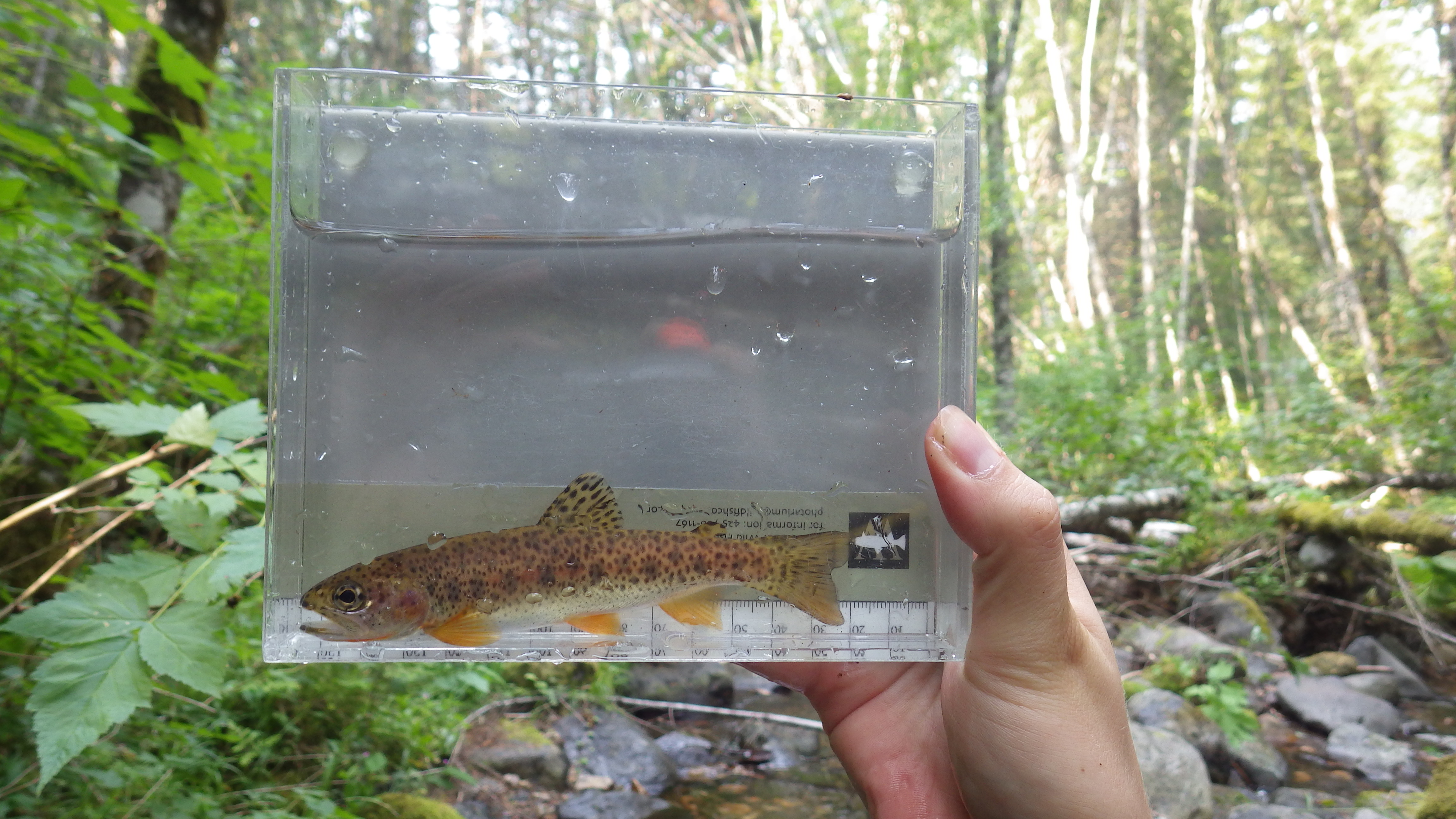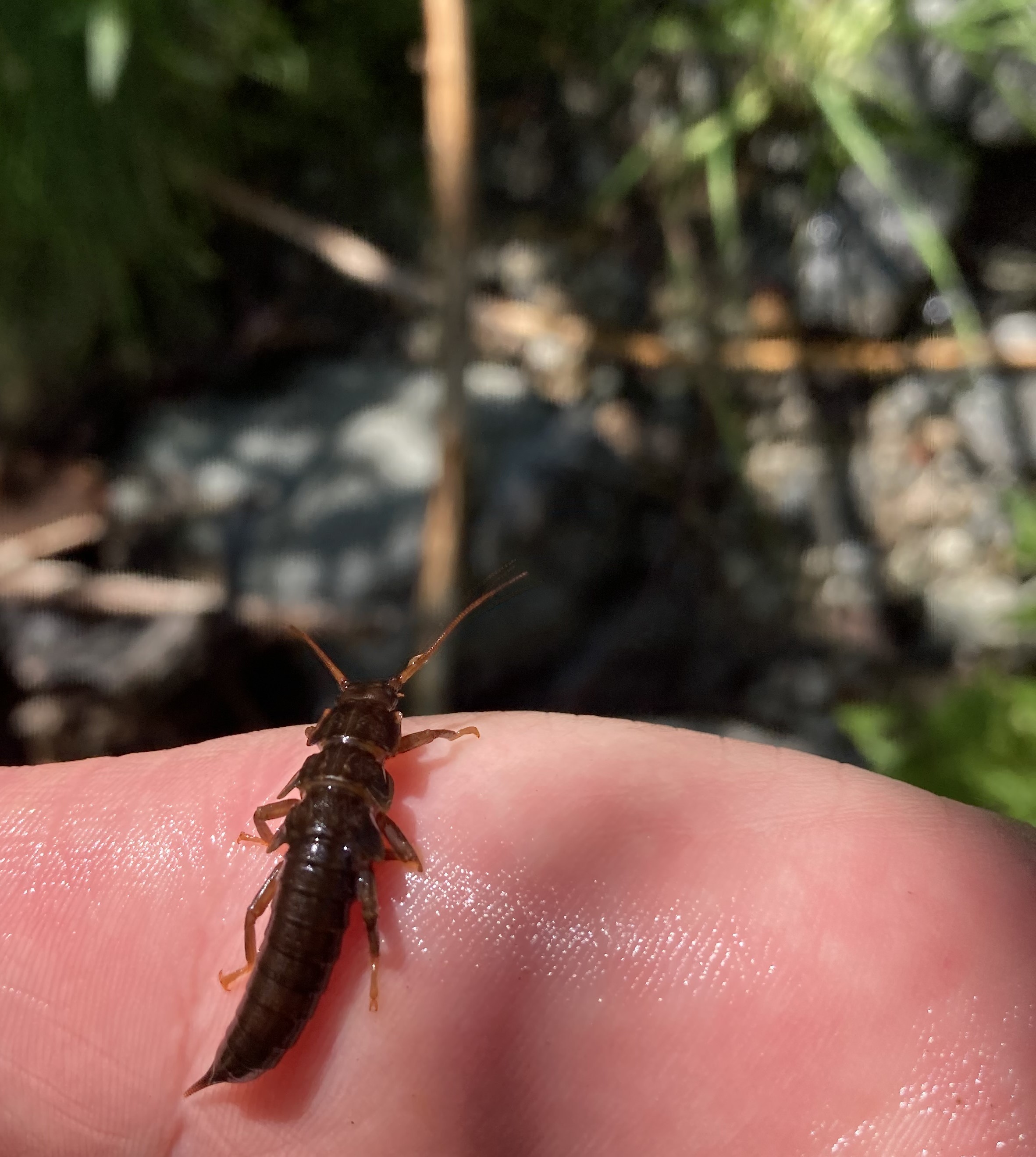
Each summer, crews of scientists and technicians head into the woods, over fields, and down canyons to locations along dozens of rivers and streams in one of eight watershed-based Status and Trends Regions around Washington.
The researchers survey the numbers and types of animals — especially the bottom-dwelling, or benthic, invertebrates, like mayflies and caddisflies — as well as the physical and chemical attributes of the streams. Crewmembers often hand-carry the gear they need, plus plenty of fresh drinking water, for some distance. It takes a long, full day for the crew to survey one site.
Third time’s the trend
This will be the long-term Watershed Health Monitoring study’s fifteenth year of studying stream habitats region-by-region, and the team is on its third sampling round through the state. Now that the team has been through each region at least two times, some preliminary trends are emerging.
Watershed Health Monitoring by region is a web-based report designed to share preliminary statewide and region-by-region watershed health information in an engaging and interactive way.
Happy little streams
Fish and stream bugs need cool, clean water to thrive. Cold water, plenty of shade, an appropriate pH, not too much silt or sand… these are great attributes for a stream to have and are indicators of good stream health. Such conditions can support a healthy stream habitat for salamanders, frogs, invertebrates, and a variety of fish.
Some streams, however, have less-than-stellar amenities for the animals that live there. The researchers call attributes that indicate poor stream health “stressors.” This refers to the way in which these stream attributes stress healthy biological communities. The stressors found in each region vary in severity and type.
A cutthroat trout measured for length and released during one of our stream surveys.
To create our new regional report, researchers looked at stream attributes shared by minimally impaired places — called “sentinel sites” — to the attributes of carefully randomized regional stream areas — called “random sites.” By comparing the random sites to the sentinel sites, researchers can assess the overall river and stream health of an area.
Our new report focuses on the types of stressors found in each of eight Status and Trends Regions and the numbers and kinds of animals that live there, comparing these data to those of minimally impacted areas.
Overall, the study found:
- Rivers and streams with low stressors tend to have a variety in the types of stream invertebrates and healthier habitats for all critters, including fish.
- Rivers and streams with many stressors, those with many poor physical and chemical stream attributes, are places where we don’t find vibrant and abundant biological communities.
Aquatic macroinvertebrates (or bugs) are good indicators of stream health.
Measuring what matters
All of our data are available to scientists and the public through the WHM Search database. We share our methods with other scientists, and our data contribute to Washington's annual State of the Salmon report. We are proud to provide key guidance for salmon restoration projects.
This year, our teams will set out for the third round through the Mid-Columbia region, including sites near Cle Elum, Ellensburg, Rimrock, Yakima, Prosser, and Kennewick, following the annual sampling schedule.
Check back from time to time. We will look in on the Watershed Health crews over this summer's sampling season through our blog and social media accounts. As the researchers analyze new data and gain new insights, adding to our emerging picture of statewide and regional stream health year by year over time, we'll keep you posted.

